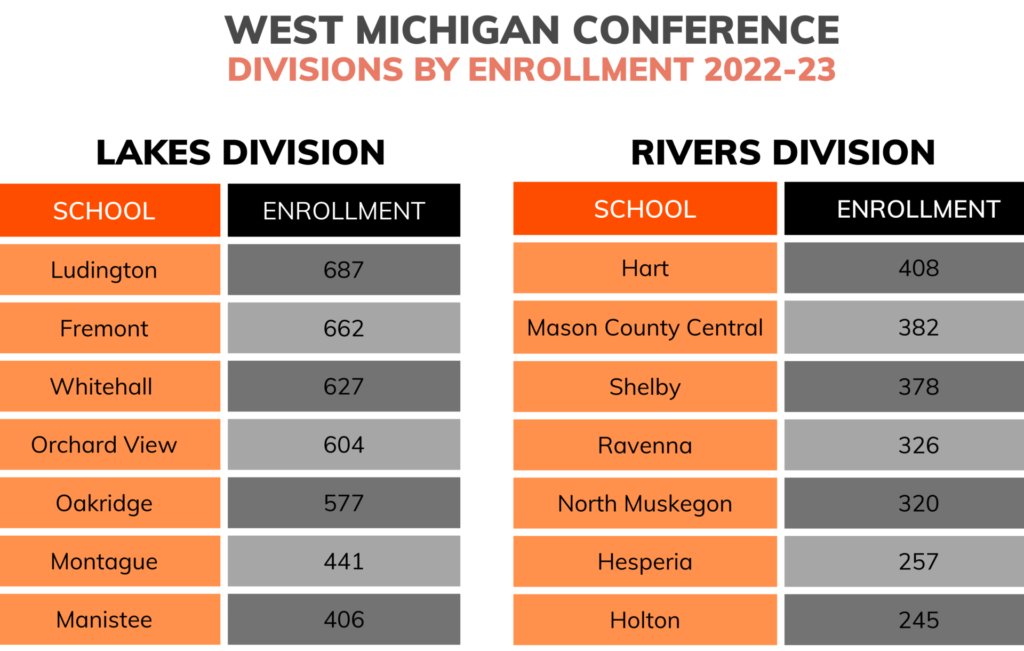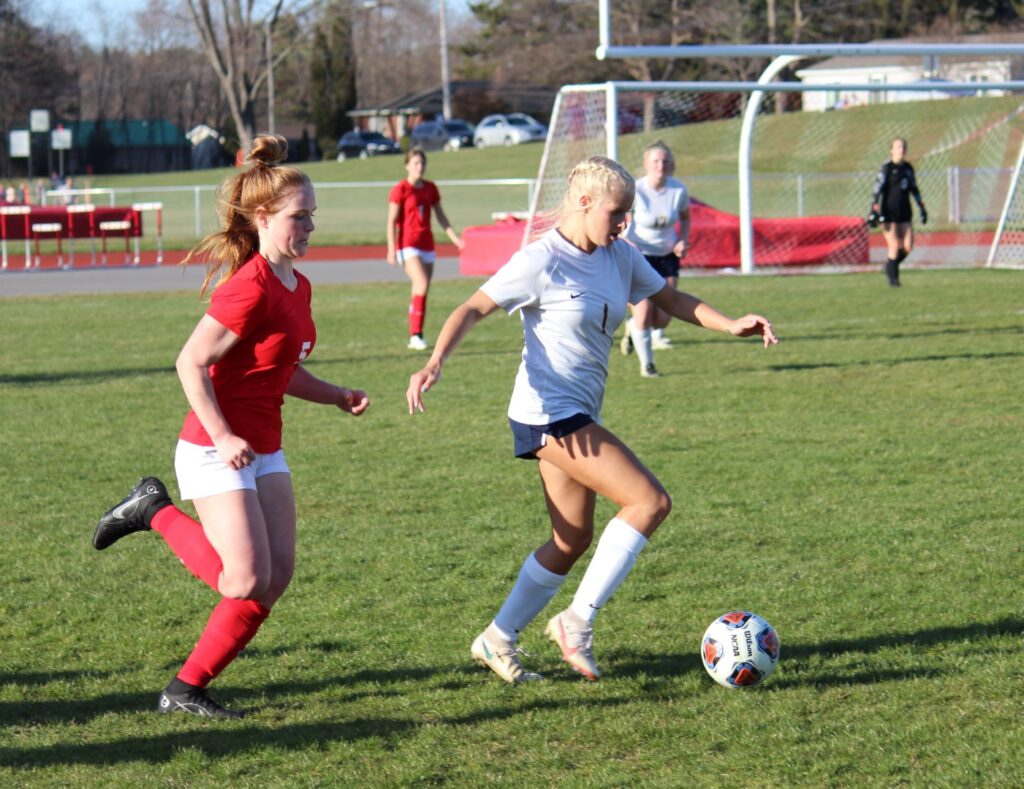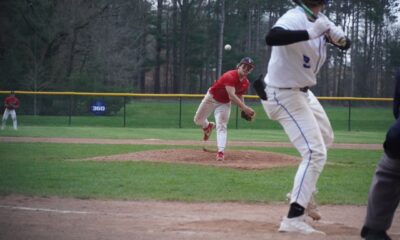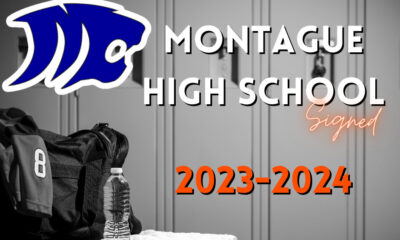Editor’s note: This is the third in a series of stories examining West Michigan Conference expansion, which takes place beginning in the 2022-23 school year. This story focuses on the divisions and dynamics around them.
Prior to the West Michigan Conference moving forward with expansion beginning in the 2022-23 school year, Montague was just fine with the way things were.
As the third-largest school enrollment-wise in the eight-member alignment of the 90-year-old conference, Montague more than held its own. The Wildcats’ athletic program has competed well across the board, winning league championships in several sports and capturing state titles three times in football and three more in girls and boys golf combined.
But, as the West Michigan Conference expands to 14 member schools and splits into two seven-team divisions across multiple sports, Montague is ready to roll with the changes.

“I know for Montague, we’re in a particular place where we’re one of the smallest schools in the bigs, but we’re totally fine playing up,” said Montague athletic director Jay Mulder, whose school will be the second-smallest enrollment-wise in 2022-23 in the Lakes Division, which will also consist of Fremont, Ludington, Manistee, Oakridge, Orchard View and Whitehall.
The “smalls” will compete in the Rivers Division, which is comprised of Hart, Hesperia, Holton, Mason County Central, North Muskegon, Ravenna and Shelby.
Fremont, Hesperia, Holton, Ludington, Manistee and Orchard View are newcomers to the West Michigan Conference. Technically, Manistee is returning to the conference after a brief time as a league member 1965-68.
Last week, this series on West Michigan Conference expansion examined the changes coming about and what caused them. The week before, the series focused on the rich history of the conference.
This week, CatchMark SportsNet is taking a look at the divisions and what their impact might be.
For sports in which each of the 14 West Michigan Conference members fields a varsity squad, the two seven-team divisions will exist. Those sports include football, volleyball, cross country, basketball, baseball, softball, and track and field.
For those sports where one or more members does not field a varsity team, the squads will compete as one conference rather than be split in divisions. Those sports include golf, soccer, wrestling and bowling.
Only Fremont, Ludington, North Muskegon and Whitehall field tennis teams from the West Michigan Conference, and those schools form another league with other members such as Grant.
At the middle-school level, the West Michigan Conference divisions will be determined by geography – north and south.

“I think when you take the size of schools, I think you’re going to see a more competitive balance in both tiers,” Mason County Central athletic director Tim Genson said. “The middle school piece, we’re going to do more of a geographic thing to start so it’s more of a blend of schools.”
According to Genson, the West Michigan Conference steered clear of naming high school divisions after legendary names from the league such as Huizenga, Schugars, Fairfield, et al, to avoid slighting anybody.
Other ideas for divisional names included Coastal, Dunes, highway numbers, colors and the like, Genson said. At the end of the day, “Lakes” and “Rivers” made the most sense to the group of athletic administrators and other school officials, he said. It was determined that the seven largest schools enrollment-wise would compete in the Lakes, while the seven smallest schools would participate in the Rivers.
“You’ve got 14 teams, two different divisions. I think I like what’s happening right now,” said Jim Moyes, a historian, North Muskegon native, and longtime radio voice in the Muskegon area, who retires in Florida.
“North Muskegon, at one time back when I was in school, was also incorporated in the Reeths-Puffer school district. Well, Reeths-Puffer of course has grown immeasurably over the years. At one time, North Muskegon and Reeths-Puffer were one and the same.”
Now, North Muskegon is the third-smallest school in the West Michigan Conference with 320 students. Only league newcomers Holton (245) and Hesperia (257) are smaller.

If you take a close look at the enrollment numbers listed by the Michigan High School Athletic Association for the 2022-23 academic year, then you’ll notice that Manistee of the Lakes Division has fewer students (406) than Hart (408) of the Rivers Division. Genson said that’s because when the divisions and scheduling were established, it was long before the February 2022 student counts and those counts weren’t released until late March or early April.
That said, division membership changes or add-ons to the league will not occur before 2025, Genson noted.
When the idea of splitting the West Michigan Conference into divisions was brought to the table, competitive balance was the primary goal. And, make no mistake, football and the growing disparity between the “haves” and “have nots” were big factors, as CatchMark SportsNet illustrated in last week’s story and video episode of this series.

“With the new league and the tiers, I think that gives us as well as the other schools in the league more opportunity to maybe see that window of football playoffs and things like that,” Genson said. “You don’t look at the schedule and go, ‘Well, there’s 9-0’ or ‘There’s a playoff,’ but I think the ability to be competitive week in and week out exists now in football for example.
“Unlike a lot of the sports, you’ve got to have a certain record or winning percentage or playoff points in order to get into the (football) playoffs – you don’t automatically get into the playoffs.”
Montague’s attitude remains, bring on the competition. The Wildcats go from one of the largest schools in the league to second-smallest in their division with 441 students.
At the same time, Mulder understands why other member schools in the West Michigan Conference are seeking more competitive balance.
“Come postseason for the MHSAA for like basketball and volleyball, we’re D-2, Division 2, and we’re one of the smallest D-2 schools in the state of Michigan,” Mulder said. “We’re at about 440 kids, whereas in tournament time we could be playing a school that has 800-850 kids.
“We’ve always embraced that challenge at Montague. We don’t mind facing bigger and better competition. So that’ll be nice to sort of get that balance, whereas say some of the smaller schools that would struggle in the past probably will have more of a level playing field.”
RELATED CONTENT:
Lead writer for CatchMark SportsNet and Web Services leader for CatchMark Technologies.

Must See
-
Girls Soccer
/ 9 hours agoEmmy Creed, top-ranked North Muskegon girls soccer team continue to cruise
Creed nets hat trick as Norse stay unbeaten in West Michigan Conference with 6-1...
By Scott DeCamp -
Scoreboard
/ 10 hours agoCatchMark Scoreboard: Spring sports results in West Michigan Conference (April 25, 2024)
West Michigan Conference coaches: Please email your results to sports@catchmarkit.com.
By Scott DeCamp -
Baseball
/ 1 day agoQuick starts in both games fuel Whitehall’s baseball sweep of Montague
Vikings cruise past Wildcats with 11-0 and 10-1 victories.
By Scott DeCamp

















